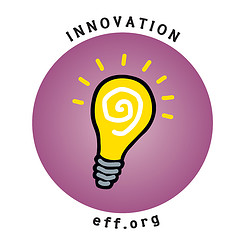|
|
|
Archive for September, 2012
Monday, September 10th, 2012
 Are you a list maker? If so, you have a lot of company. Are you a list maker? If so, you have a lot of company.
We’re living in the era of the list, maybe even its golden age. The Web click has led to the wholesale repackaging of information into lists, which can be complex and wonderful pieces of information architecture. Our technology has imperceptibly infected us with “list thinking.”
Remember Day Timers? Those fat loose-leaf notebooks in which you organized your work, not to mention your life?
Then to-do lists migrated to PDAs and more recently to Siri, but paper is making a comeback.
I don’t find this strange because I never migrated to digital.
The reason is simple—“out of site/out of mind.”
I can write to-do lists, reading lists, all kinds of lists digitally, but they have no staying power—and it’s not just me; experts are finding the same thing.
Paper, says the productivity expert David Allen, is “in your face.” Its physical presence can be a goad to completing tasks, whereas computer files can easily be hidden and thus forgotten, he said. Some of his clients are returning to paper planners for this very reason, he added.
Further, the idea that a person can grasp the complexities of a multi-part project plan by reading it on a smartphone screen or tablet is just plain laughable.
So the next time you are chided for writing (with a pen or pencil) a to-do list, making notes (in the margins) or reading hardcopy you can email or text the above URL and tell your tormentors that you are being efficient and they might try doing the same.
Flickr image credit: Jayel Aheram
Posted in Communication, Personal Growth | No Comments »
Sunday, September 9th, 2012
 Excellence. People talk about it all the time; kids are told to strive for excellence; companies claim excellence for their people, culture, work environment and, of course, their products. But what is excellence really? Excellence. People talk about it all the time; kids are told to strive for excellence; companies claim excellence for their people, culture, work environment and, of course, their products. But what is excellence really?
John W. Gardner says, “Excellence is doing ordinary things extraordinarily well.” As opposed to half-assed, which seems to be more the norm these days.
While Rick Pitino believes, “Excellence is the unlimited ability to improve the quality of what you have to offer.” Too bad more companies don’t take this to heart.
Excellence isn’t an accident and it rarely makes its appearance early in any process. As Aristotle said, “We are what we repeatedly do. Excellence, then, is not an act, but a habit.”
Is there a way to claim excellence through other than our own actions? According to Voltaire there is, “By appreciation, we make excellence in others our own property.”
Thomas Boswell tells us, “There is no substitute for excellence – not even success” Obviously Wall Street wouldn’t agree!
Finally, here’s an anonymous bit that explains excellence in a most excellent fashion.
“Excellence can be obtained if you:
…care more than others think is wise;
…risk more than others think is safe;
…dream more than others think is practical;
…expect more than others think is possible.”
Flickr image credit: Micah Taylor
Posted in Quotable Quotes | No Comments »
Saturday, September 8th, 2012
 Innovation is often a direct result of research, but they both depend on a willingness to look at the tangible and intangible in new ways and healthcare and medicine (not the same thing) are starting to benefit. Here are a few things that caught my interest. Innovation is often a direct result of research, but they both depend on a willingness to look at the tangible and intangible in new ways and healthcare and medicine (not the same thing) are starting to benefit. Here are a few things that caught my interest.
The Cleveland Clinic in Ohio, which has long been a medical innovator, has turned its attention to better ways to use IT to improve patient outcomes. (For many years the Clinic has had its own company formed specifically to commercialize its discoveries, leading to conflict-of-interest accusations.)
The clinic is a pioneer in providing information to patients and linking patient involvement with medical records and healthcare practice improvement. It is also vigorously experimenting with medical IT in new forms of patient engagement and education, including social media.
Startup Healthy Labs is creating social websites that target specific chronic medical conditions, such as Crohn’s Disease and Colitis, which are verifiably for patients.
…patient-only networks — people have to be verified as actually being diagnosed with the relevant issues before they can join. This is meant to keep out people shilling for pharmaceuticals and certain holistic “cures,” and keep the community centered around the real folks who are dealing with chronic diseases at hand.
Practice Fusion is for the rest of us, providing the kind of central medical repository that has been talked about for years, but doing it cost effectively.
… a massive database of information for medical professionals and patients that includes everything from records and vitals to doctor reviews, has data for more than 50 million patients. More than 150,000 medical professionals use it to keep track of patient data.
Experts researching the outlandish rising costs of US Healthcare are finally focusing on a major cause—the American attitude of ‘more is better’.
But an epidemic of overtreatment — too many scans, too many blood tests, too many procedures — is costing the nation’s health care system at least $210 billion a year, according to the Institute of Medicine, and taking a human toll in pain, emotional suffering, severe complications and even death.
Thanks to false information that vaccinations are the cause of autism many childhood illnesses that were seen as vanquished have made a comeback. Multiple studies have found that autism is securely tied to the world of auto immune diseases and the problems start in the womb—but the information has not been popularized.
Danish study, which included nearly 700,000 births over a decade, found that a mother’s rheumatoid arthritis, a degenerative disease of the joints, elevated a child’s risk of autism by 80 percent. Her celiac disease, an inflammatory disease prompted by proteins in wheat and other grains, increased it 350 percent.
Finally, did you know that low sperm count is a global problem? And that it is worst in Israel.
… that his stable of superior donors includes only tall, twentysomething ex-soldiers whose sperm has passed rigorous genetic testing. But finding such super sperm isn’t as easy as it used to be. Only 1 in 100 donors makes the cut. A decade ago, it was 1 in 10.
Flickr image credit: pedroelcarvalho
Posted in Expand Your Mind | No Comments »
Friday, September 7th, 2012
 A Friday series exploring Startups and the people who make them go. Read all If the Shoe Fits posts here A Friday series exploring Startups and the people who make them go. Read all If the Shoe Fits posts here
It will come as no surprise that most young people want to work for startups or small biz.
Of those aged 19 to 29 who were surveyed, 47 percent work for companies with less than 100 employees, and 30 percent work for medium sized companies that have between 100 and 1,500 employees.
Or that they aren’t the top preference for larger companies.
Another study found that older, more established companies are less likely to hire younger people than are newer companies.
“Ah ha,” I can hear you thinking, “That proves I’m hiring the right talent.”
Are you sure?
Or does it just prove you are hiring deep within your own comfort zone, as are those in large companies?
Option Sanity™ establishes a new comfort zone.
Come visit Option Sanity for an easy-to-understand, simple-to-implement stock allocation system. It’s so easy a CEO can do it.
Warning.
Do not attempt to use Option Sanity™ without a strong commitment to business planning, financial controls, honesty, ethics, and “doing the right thing.”
Use only as directed.
Users of Option Sanity may experience sudden increases in team cohesion and worker satisfaction. In cases where team productivity, retention and company success is greater than typical, expect media interest and invitations as keynote speaker.
Flickr image credit: HikingArtist
Posted in Hiring, If the Shoe Fits | No Comments »
Thursday, September 6th, 2012
 Tuesday I wrote that you should always consider the source of a comment before considering the comment itself. Tuesday I wrote that you should always consider the source of a comment before considering the comment itself.
The same day Serguei Beloussov, founder of Parallels and Runa Capital, said the same thing with regard to money sources in TechCrunch.
By viewing money as the most important thing for their business, startups often bring themselves into a corner. Entrepreneurs must place a premium on the quality of the investor(s) and understand why a smaller amount of money can serve companies better, in most cases, than big money with little or no relevant business expertise.
Sources also matter when it comes to the skills you need in your startup.
When a badly needed set of skills walks through the door managers and even team members will often turn a blind eye to the possessor of those skills.
The red flags that pop up during interviews are rationalized or ignored—even when they are waving madly in a high wind—a ‘get the skills and we’ll worry about the rest later’ attitude prevails.
The problem, of course, is that ‘later’ comes very quickly, often with weeks and sometimes just days.
At that point, you are faced with the choice of keeping the person and having your team damaged or even torn asunder or terminating her and starting your search over.
It doesn’t matter whether you’re evaluating comments or money or skills it’s the source that counts.
Or put another way (paraphrasing), it’s the people, stupid.
SUBMIT YOUR STORY
Be the Thursday feature – Entrepreneurs: [your company name]
Share the story of your startup today.
Send it along with your contact information and I’ll be in touch.
Questions? Email or call me at 360.335.8054 Pacific time.
Flickr image credit: Hartwig HKD
Posted in Entrepreneurs, Hiring | 1 Comment »
Wednesday, September 5th, 2012
 If you listen to the media, especially new media, you would think the US is a hotbed of innovation. If you listen to the media, especially new media, you would think the US is a hotbed of innovation.
You would be wrong.
“The Information Technology Innovation Foundation ranked the U.S. last of 40 countries in terms of improved innovation capacity over the past decade.”
What if you asked business leaders? More than two-thirds would give their organizations high marks for innovation.
But what happens when you ask the working stiffs in those same organizations? You’d find innovation marks well below half.
Some 78% of leaders said yes; just 43% of employees agreed. Does the leader “urge employees to continually expand their understanding of business trends and emerging issues”? Leaders 77%; employees 51%. Does he or she “guide employees who fail or make mistakes to reframe the experiences as learning opportunities”? Leaders 77%; employees 47%. And does he or she “champion the merits of employee-initiated ideas to senior management”? Leaders 75%; employees 42%.
Those questions were asked of “513 leaders and 514 non-leader employees.”
I found grim amusement in the recommended fixes.
- Senior Management Sets the Pace
- Choose the Right Leaders
- Develop Innovation Leaders
- Build a Business Process for Innovation.
I thought senior management were the leaders, but obviously not since they are supposed to choose the “right leaders” and develop “innovation leaders.”
The idea that innovation thinking and support can be delegated by senior management to specialists at lower levels is just plain ludicrous.
If you want an innovative company filled with innovative employees then you need a culture of innovation that includes no fear, room for initiative and where the messenger is never killed.
(For more on culture and innovation, including links to research and articles, click here.)
Oops; I forgot to send an entry to The September 2012 Leadership Development Carnival NFL Kick-off Edition, but at least I remembered to give you the link!
Flickr image credit: EFF
Posted in Culture, Innovation | No Comments »
Tuesday, September 4th, 2012
 Giant corporation, medium company, small biz or startup chances are you have in the past or are working now with someone you can’t stand. Giant corporation, medium company, small biz or startup chances are you have in the past or are working now with someone you can’t stand.
The cause can be anything from annoying habits to seriously bad performance, but the result is the same—it drives you nuts.
HBR provides some good advice on the subject in How to Work with Someone You Hate that is useful to anybody and in non-work situations.
But there is one attitude I’ve relied on for most of my life that has served me well, “consider the source of the comment before considering the comment itself.”
Typically, we do the opposite taking in the words along with any baggage, and allowing them to do their worst.
Whereas, if we consider the source, including who said them, our relationship with that person, respect level, circumstances and context, the impact of what was actually said dissipates completely.
Considering the source is worth sharing with your kids, friends and colleagues.
Over the years I’ve found it takes the bite out of the majority of critiques, criticisms and commentary that fill our days.
Even remembering it late, after the hurt or upset has died down, has put things in perspective more times than I can count.
Try it; you’ll be surprised how much more positive, not to mention peaceful, your world will become.
Flickr image credit: fauxto_digit
Posted in Ducks In A Row, Personal Growth | No Comments »
Monday, September 3rd, 2012
 Took the day off:) Took the day off:)
Flickr image credit: downing.amanda
Posted in Just For Fun | No Comments »
Sunday, September 2nd, 2012
 The other day I was looking for something that I thought was from Aristotle. I’ve quoted Aristotle before on various subjects, but some of what I came across could just as easily be specific commentary on today’s technology and workplace instead of thoughts from more than 2000 years ago. The other day I was looking for something that I thought was from Aristotle. I’ve quoted Aristotle before on various subjects, but some of what I came across could just as easily be specific commentary on today’s technology and workplace instead of thoughts from more than 2000 years ago.
On hiring: “Personal beauty is a greater recommendation than any letter of introduction”
On managing: “No one loves the man whom he fears.”
On entrepreneurism: “First, have a definite, clear practical ideal; a goal, an objective. Second, have the necessary means to achieve your ends; wisdom, money, materials, and methods. Third, adjust all your means to that end.”
On Facebook: “He who hath many friends hath none.” and “A friend to all is a friend to none.”
On Social in general: “Wishing to be friends is quick work, but friendship is a slow-ripening fruit.”
On unwiring vs. 24/7 connectedness: “He is his own best friend, and takes delight in privacy whereas the man of no virtue or ability is his own worst enemy and is afraid of solitude.”
So, what do you think? Am I nuts?
Flickr image credit: Tilemahos
Posted in Quotable Quotes | 1 Comment »
Saturday, September 1st, 2012
 Technically speaking the links I’ve been offering lately have been off subject and perhaps I should apologize to the purists among you (assuming there are any). But I honestly believe you can draw useful intelligence from off-subject information and experiences, both direct and vicarious, to apply to your professional life, while some just apply living in general. Today I’ll start with the most applicable and move outwards to the indirect. Technically speaking the links I’ve been offering lately have been off subject and perhaps I should apologize to the purists among you (assuming there are any). But I honestly believe you can draw useful intelligence from off-subject information and experiences, both direct and vicarious, to apply to your professional life, while some just apply living in general. Today I’ll start with the most applicable and move outwards to the indirect.
It’s a well-known fact that the line you aren’t in moves fastest—or does it? New research shows that it’s not how long you actually wait, but how long you are idle that counts, which is why I always try to carry a book.
“Often the psychology of queuing is more important than the statistics of the wait itself,” notes the M.I.T. operations researcher Richard Larson, widely considered to be the world’s foremost expert on lines. Occupied time (walking to baggage claim) feels shorter than unoccupied time (standing at the carousel). Research on queuing has shown that, on average, people overestimate how long they’ve waited in a line by about 36 percent.
Understanding nonverbal communications means more than looking at the obvious clues, such as crossed arms; it means taking the 3 C’s into account.
One way of increasing your accuracy is applying the 3 C’s of Nonverbal Communication: context, clusters, and congruence. Context includes what environment the situation is taking place in, the history between the people, and other factors such as each person’s role (for example- an interaction between a boss and employee).
Parenting and managing (or leading, if you prefer) have a lot in common, so I tend to read parenting articles.
A recent essay from a college professor who understands both sides of the coin when it comes to disengaging from a child-about-to-be-an-adult offers up insights that are just as useful to a manager struggling to delegate as to a parent who needs to let go.
Parents and children follow one another’s progress on Facebook. They post photos of the campus lobster bake on Instagram. They tweet. They text. They Tumbl.
There are times when I want to tell my students that if they want to learn anything at college, their first step should be defriending their parents. (…) Now that I am one myself, I finally know what it is parents are going through — not just letting go of a child but of an entire chapter of their lives.
Finally, The NYT has a feature called Room for Debate that poses a subject with experts on both sides adding their thoughts. Frequently the best stuff is found in the hundreds of comments. The most recent asked if “modern parents were rude… Or just doing what’s best for their children.” Lyss Stern, founder of Divalysscious Moms, a “luxury lifestyle company for urban mothers”, provided the most comic relief from a modern, totally self-absorbed mindset—almost a caricature of the subject.
“Yes, sometimes I did let my younger son run around Barney’s because I know he’d pitch a fit if I kept him in his stroller. But that doesn’t make me a bad mom.”
Sorry Lyss, according to 99% of the comments I read it does.
Flickr image credit: pedroelcarvalho
Posted in Expand Your Mind | No Comments »
|
 Subscribe to
Subscribe to
MAPping Company Success
About Miki 
Clarify your exec summary, website, etc.
Have a quick question or just want to chat? Feel free to write or call me at 360.335.8054
The 12 Ingredients of a Fillable Req
CheatSheet for InterviewERS
CheatSheet for InterviewEEs™
Give your mind a rest. Here are 4 quick ways to get rid of kinks, break a logjam or juice your creativity!
Creative mousing
Bubblewrap!
Animal innovation
Brain teaser
The latest disaster is here at home; donate to the East Coast recovery efforts now!
Text REDCROSS to 90999 to make a $10 donation or call 00.733.2767. $10 really really does make a difference and you'll never miss it.
And always donate what you can whenever you can
The following accept cash and in-kind donations: Doctors Without Borders, UNICEF, Red Cross, World Food Program, Save the Children
*/
?>About Miki
About KG
Clarify your exec summary, website, marketing collateral, etc.
Have a question or just want to chat @ no cost? Feel free to write
Download useful assistance now.
Entrepreneurs face difficulties that are hard for most people to imagine, let alone understand. You can find anonymous help and connections that do understand at 7 cups of tea.
Crises never end.
$10 really does make a difference and you’ll never miss it,
while $10 a month has exponential power.
Always donate what you can whenever you can.
The following accept cash and in-kind donations:
|
 Are you a list maker? If so, you have a lot of company.
Are you a list maker? If so, you have a lot of company.



 Excellence. People talk about it all the time; kids are told to strive for excellence; companies claim excellence for their people, culture, work environment and, of course, their products. But what is excellence really?
Excellence. People talk about it all the time; kids are told to strive for excellence; companies claim excellence for their people, culture, work environment and, of course, their products. But what is excellence really? Innovation is often a direct result of research, but they both depend on a willingness to look at the tangible and intangible in new ways and healthcare and medicine (not the same thing) are starting to benefit. Here are a few things that caught my interest.
Innovation is often a direct result of research, but they both depend on a willingness to look at the tangible and intangible in new ways and healthcare and medicine (not the same thing) are starting to benefit. Here are a few things that caught my interest. A Friday series exploring Startups and the people who make them go. Read all If the Shoe Fits posts
A Friday series exploring Startups and the people who make them go. Read all If the Shoe Fits posts 
 If you listen to the media, especially new media, you would think the US is a hotbed of innovation.
If you listen to the media, especially new media, you would think the US is a hotbed of innovation. Giant corporation, medium company, small biz or startup chances are you have in the past or are working now with someone you can’t stand.
Giant corporation, medium company, small biz or startup chances are you have in the past or are working now with someone you can’t stand.
 The other day I was looking for something that I thought was from Aristotle. I’ve quoted Aristotle before on various subjects, but some of what I came across could just as easily be specific commentary on today’s technology and workplace instead of thoughts from more than 2000 years ago.
The other day I was looking for something that I thought was from Aristotle. I’ve quoted Aristotle before on various subjects, but some of what I came across could just as easily be specific commentary on today’s technology and workplace instead of thoughts from more than 2000 years ago.
